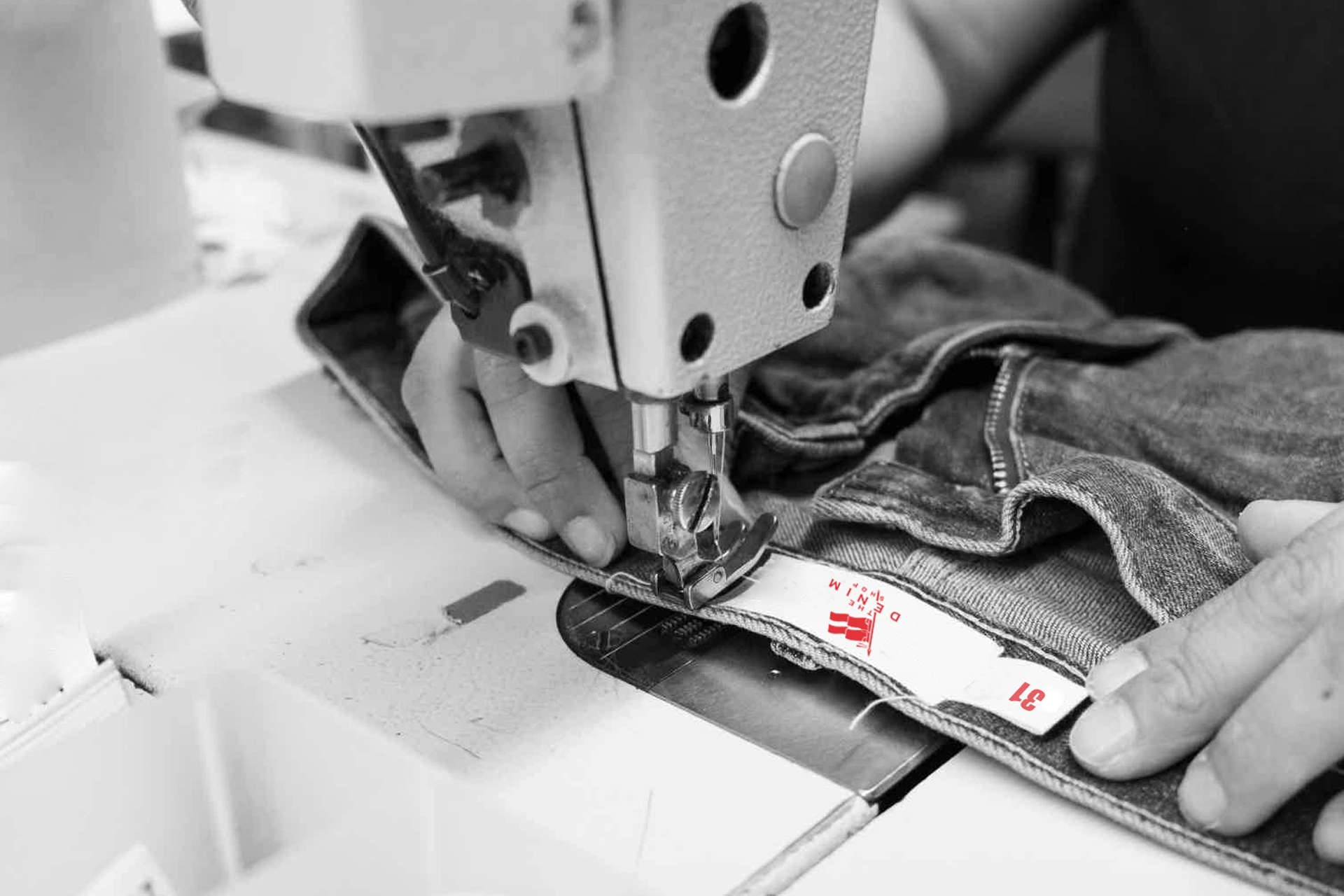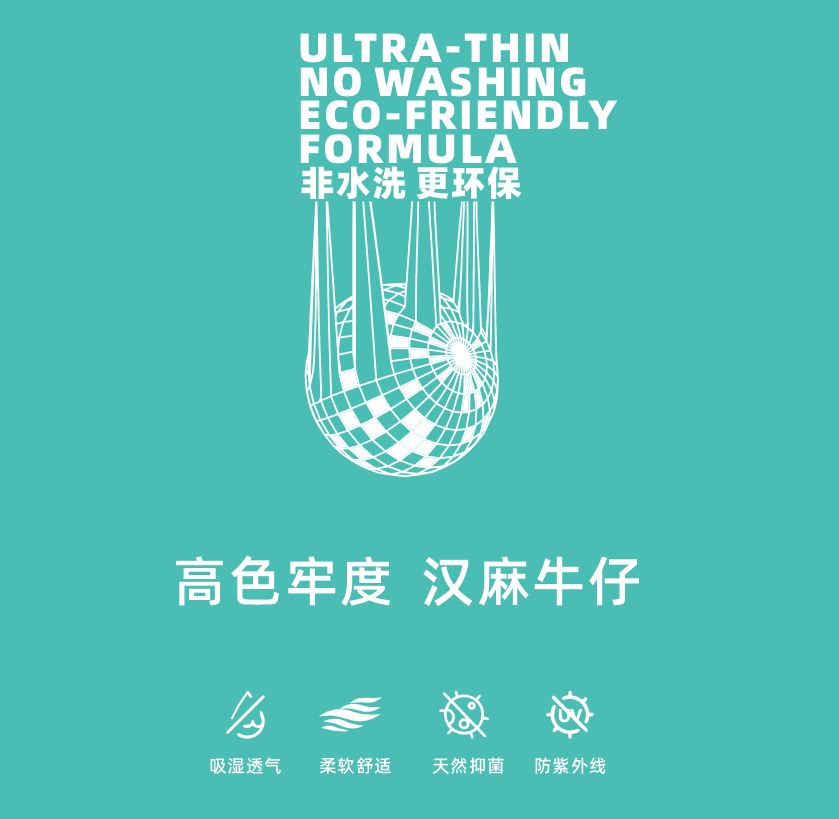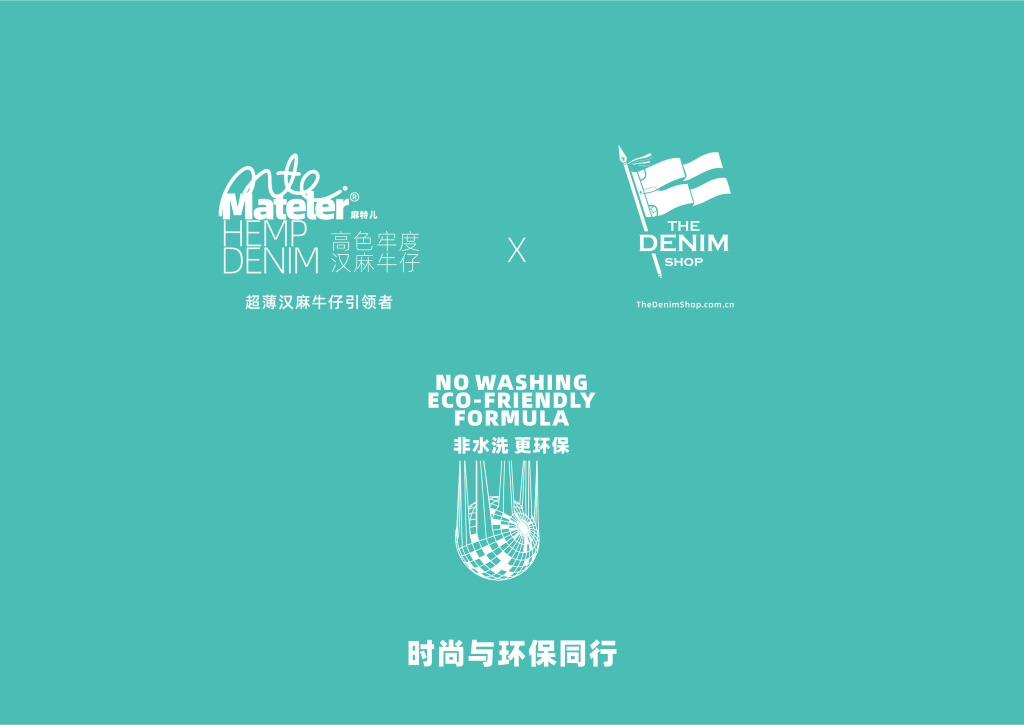引言
在追求环保与时尚融合的当今时代,有机染(高色牢度免水洗)汉麻牛仔布以其独特的优势脱颖而出,成为牛仔布领域的创新亮点。这种牛仔布不仅体现了对传统牛仔布制作工艺的革新,更满足了人们对可持续时尚的渴望。
汉麻:卓越的纤维基础
1. 天然特性 – 汉麻是一种极具生态价值的天然纤维。它在生长过程中具有很强的环境适应能力,对土壤肥力要求不高,且能在生长期间吸收大量二氧化碳,有助于缓解气候变化。 – 汉麻纤维具有天然的抗菌、抗紫外线等特性。其抗菌性源于汉麻自身含有的多种活性成分,能够抑制细菌和真菌的生长,使制成的牛仔布在日常穿着中更加卫生健康;抗紫外线能力则为穿着者提供了额外的防护,减少紫外线对皮肤的伤害。
2. 纤维结构与性能 – 汉麻纤维的内部结构呈现独特的中空状态,这种结构赋予了汉麻牛仔布出色的透气性。空气可以在纤维的中空部分自由流动,使得穿着者在各种环境下都能保持舒适的体感,尤其在炎热天气中,能够有效散发身体产生的热量和湿气。 – 汉麻纤维还具有较高的强度,这使得汉麻牛仔布具有良好的耐磨性。即使经过长时间的穿着和摩擦,汉麻牛仔布依然能够保持其形状和结构,不易破损,延长了牛仔制品的使用寿命。
有机染:环保与色彩的完美结合
有机染料的特点
有机染过程使用的是符合有机标准的染料。这些染料主要来源于天然植物、动物或矿物等,与传统化学染料相比,具有显著的环保优势。它们在生产和使用过程中不产生或极少产生有害物质,如重金属、甲醛等,降低了对环境和人体健康的潜在危害。 – 有机染料具有可生物降解性。在自然环境中,有机染料能够被微生物分解,不会像一些化学染料那样在土壤和水体中长时间残留,从而减少了对生态系统的污染。
高色牢度的实现
通过先进的有机染技术,汉麻牛仔布实现了高色牢度。这种高色牢度是在不依赖传统水洗工艺的情况下达成的,避免了水洗过程中大量水资源的浪费以及可能产生的环境污染。在有机染过程中,通过精确控制染色的温度、时间、染料浓度以及采用特殊的染色助剂等手段,使染料分子能够深入且牢固地附着在汉麻纤维上。这不仅确保了牛仔布在穿着和洗涤过程中不易褪色,还保持了颜色的鲜艳度和均匀性。
免水洗工艺:可持续发展的关键
1. 传统水洗工艺的弊端 – 传统牛仔布制作中的水洗工艺通常需要消耗大量的水资源。据统计,每生产一条水洗牛仔裤可能消耗几十升甚至上百升的水,这对于水资源日益紧张的地球来说是一个巨大的负担。 – 水洗过程中还会使用各种化学助剂,如漂白剂、柔软剂等,这些化学物质随着废水排放到环境中,可能会对水体和土壤造成污染,影响生态平衡。
2. 免水洗的优势 – 免水洗工艺直接解决了水资源浪费和化学污染的问题。对于有机染(高色牢度免水洗)汉麻牛仔布而言,这一工艺在保持牛仔布颜色和性能的同时,实现了生产过程的环保化。 – 从生产效率来看,免水洗工艺减少了水洗、烘干等复杂工序,缩短了生产周期,提高了生产效率,从而在一定程度上降低了生产成本。
市场前景与应用
1. 时尚与环保的双重需求推动- 在时尚领域,消费者对环保和可持续发展的关注度不断提高。有机染(高色牢度免水洗)汉麻牛仔布正好满足了这一需求,它为设计师提供了一种既具有独特质感又符合环保理念的新型面料。从高端时尚品牌到快时尚品牌,都开始关注这种牛仔布的应用潜力,有望在牛仔裤、牛仔外套、裙装等各类牛仔制品中广泛应用。
2. *多领域的应用拓展 – 除了时尚服装领域,这种汉麻牛仔布在功能性服装方面也具有广阔的应用前景。例如,在户外运动服装领域,其天然的抗菌、抗紫外线和透气性能,再加上高色牢度和免水洗的特点,使其成为理想的选择。在工作服领域,汉麻牛仔布的耐用性和环保性也能够满足不同工作环境的需求。
有机染(高色牢度免水洗)汉麻牛仔布凭借汉麻纤维的天然优势、有机染的环保特性以及免水洗工艺的创新,为牛仔布产业的可持续发展提供了一种极具潜力的解决方案。它不仅在时尚界引领着环保与创新的潮流,还在多领域的应用中展现出广阔的前景,有望在未来的纺织市场中占据重要的一席之地。
Organic – dyed (High – color – fastness, Water – free – washing) Hemp Denim:
An Innovative Choice for Sustainable Fashion”
## I. Introduction In the current era of pursuing the integration of environmental protection and fashion, organic – dyed (high – color – fastness, water – free – washing) hemp denim stands out with its unique advantages and becomes an innovative highlight in the denim field. This type of denim not only represents an innovation in traditional denim – making processes but also meets people’s aspiration for sustainable fashion.
## II. Hemp: An Excellent Fiber Foundation
1. **Natural Characteristics** – Hemp is a natural fiber of great ecological value. It has strong environmental adaptability during growth. It doesn’t require high soil fertility and can absorb a large amount of carbon dioxide during growth, which helps to mitigate climate change. – Hemp fibers possess natural antibacterial and anti – ultraviolet properties. Its antibacterial property stems from various active ingredients in hemp itself, which can inhibit the growth of bacteria and fungi, making the produced denim more hygienic and healthy for daily wear; the anti – ultraviolet ability provides additional protection for wearers, reducing the harm of ultraviolet rays to the skin.
2. **Fiber Structure and Properties** – The internal structure of hemp fibers is in a unique hollow state. This structure endows hemp denim with excellent air permeability. Air can freely flow through the hollow parts of the fibers, enabling wearers to maintain a comfortable body feeling in various environments. Especially in hot weather, it can effectively dissipate the heat and moisture generated by the body. – Hemp fibers also have relatively high strength, which gives hemp denim good abrasion resistance. Even after long – term wearing and friction, hemp denim can still maintain its shape and structure and is not easily damaged, thus prolonging the service life of denim products.
## III. Organic Dyeing: The Perfect Combination of Environmental Protection and Color
1. **Characteristics of Organic Dyes** – The organic dyeing process uses dyes that meet organic standards. These dyes are mainly derived from natural plants, animals or minerals. Compared with traditional chemical dyes, they have significant environmental protection advantages. They produce no or very few harmful substances, such as heavy metals and formaldehyde, during production and use, reducing the potential harm to the environment and human health. – Organic dyes are biodegradable. In the natural environment, organic dyes can be decomposed by microorganisms and will not remain in soil and water for a long time like some chemical dyes, thus reducing pollution to the ecosystem.
2. **Achievement of High Color Fastness** – Through advanced organic dyeing techniques, high color fastness is achieved in hemp denim. This high color fastness is achieved without relying on traditional water – washing processes, avoiding the waste of a large amount of water resources and possible environmental pollution during the water – washing process. – During the organic dyeing process, by precisely controlling the dyeing temperature, time, dye concentration and using special dyeing auxiliaries, dye molecules can be deeply and firmly attached to hemp fibers. This not only ensures that the denim is not easy to fade during wearing and washing but also maintains the brightness and uniformity of the color.
## IV. Water – free – washing Process: The Key to Sustainable Development
1. **Disadvantages of Traditional Water – washing Processes** – The traditional water – washing process in denim production usually consumes a large amount of water resources. According to statistics, the production of a pair of water – washed jeans may consume dozens or even hundreds of liters of water, which is a huge burden on the increasingly scarce water resources on the earth. – During the water – washing process, various chemical auxiliaries, such as bleaching agents and softening agents, are also used. These chemical substances are discharged into the environment with wastewater and may pollute water bodies and soil, affecting ecological balance.
2. **Advantages of Water – free – washing** – The water – free – washing process directly solves the problems of water resource waste and chemical pollution. For organic – dyed (high – color – fastness, water – free – washing) hemp denim, this process realizes the environmental protection of the production process while maintaining the color and performance of the denim. – From the perspective of production efficiency, the water – free – washing process reduces complex processes such as water – washing and drying, shortens the production cycle, and improves production efficiency, thereby reducing production costs to a certain extent.
## V. Market Prospects and Applications
1. **Driven by Dual Demands for Fashion and Environmental Protection** – In the fashion field, consumers’ attention to environmental protection and sustainable development is constantly increasing. Organic – dyed (high – color – fastness, water – free – washing) hemp denim just meets this demand. It provides designers with a new type of fabric that has a unique texture and conforms to the environmental protection concept. From high – end fashion brands to fast – fashion brands, they all begin to pay attention to the application potential of this type of denim and are expected to be widely used in various denim products such as jeans, denim jackets and skirts.
2. **Expansion of Applications in Multiple Fields** – Besides the field of fashion clothing, this hemp denim also has broad application prospects in functional clothing. For example, in the field of outdoor sports clothing, its natural antibacterial, anti – ultraviolet and air – permeable properties, combined with the characteristics of high color fastness and water – free – washing, make it an ideal choice. In the workwear field, the durability and environmental – friendliness of hemp denim can also meet the needs of different working environments.
## VI. Conclusion Organic – dyed (high – color – fastness, water – free – washing) hemp denim, relying on the natural advantages of hemp fibers, the environmental – protection characteristics of organic dyeing and the innovation of the water – free – washing process, provides a highly potential solution for the sustainable development of the denim industry. It not only leads the trend of environmental protection and innovation in the fashion industry but also shows broad prospects in applications in multiple fields and is expected to occupy an important position in the future textile market.



